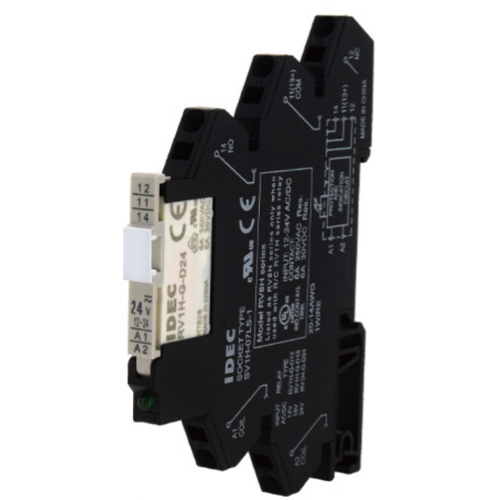IDEC Electromechanical Relays

IDEC electromechanical relays are designed to provide reliable signal switching and circuit control in industrial and automation environments. These relays operate through mechanical movement, using an energized coil to generate a magnetic field that moves an armature and opens or closes electrical contacts. This proven design makes electromechanical relays well-suited for applications requiring dependable isolation, clear on/off operation, and long service life.
Available in single, double, triple, and quad pole configurations, IDEC electromechanical relays can control multiple circuits either individually or in sequence. They are widely used in control panels, machinery, and automation systems due to their high reliability, low power consumption, and consistent switching performance. Electromechanical relays are especially effective in harsh environments, as they tolerate high temperatures and are resistant to electromagnetic interference (EMI), radio frequency interference (RFI), electrical noise, and transient surges.
IDEC’s RV8 Series interface relays are engineered for industrial automation, panel building, assembly machines, PLC outputs, and controller-based applications that require higher switching capacity. These relays function as a universal interface between controllers and actuators, allowing safe and efficient switching of small to medium loads. Pre-assembled relays and sockets with screw or spring clamp terminations simplify installation and reduce wiring time in control panels.
FAQs
Q: What is an electromechanical relay?
An electromechanical relay is a remote-controlled switch that uses a coil, armature, and mechanical contacts to open or close electrical circuits when energized.
Q: What pole configurations are available for IDEC electromechanical relays?
IDEC electromechanical relays are available in single, double, triple, and quad pole configurations to support a wide range of control and switching needs.
Q: Why are electromechanical relays preferred in harsh environments?
They perform reliably in high temperatures and are resistant to EMI, RFI, electrical noise, surges, and transients that can affect solid-state devices.
Q: What applications are IDEC RV8 Series relays designed for?
RV8 Series relays are used in industrial automation, PLC interfaces, control panels, and machinery where reliable switching of small to medium loads is required.
Q: What installation options are available for IDEC relays?
IDEC electromechanical relays are offered with pre-assembled sockets featuring screw terminals or spring clamp connections for efficient panel installation.
Why Buy IDEC Electromechanical Relays from RSP Supply
RSP Supply offers a broad selection of IDEC electromechanical relays designed for dependable performance in industrial control and automation systems. Our inventory includes multiple pole configurations and interface relay options to support diverse application requirements. Customers rely on RSP Supply for trusted industrial components, technical knowledge, and solutions that ensure long-term reliability in demanding environments.

